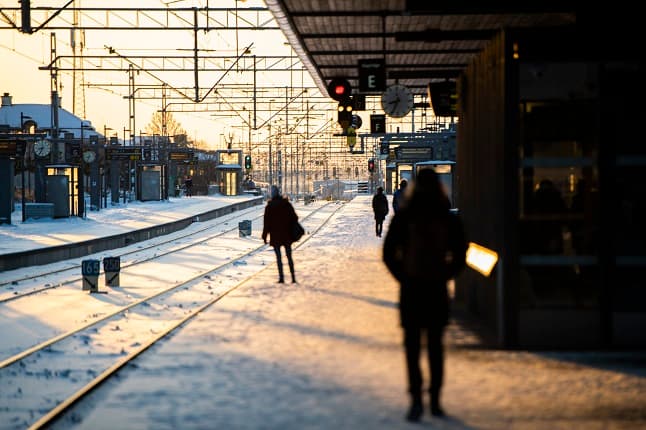Easter travel can go ahead, but 'if you're unsure, stay home': Swedish health agency

Sweden’s Public Health Agency said people can go ahead with Easter travel plans as long as they take sufficient precautions,
Sara Byfors from the Public Health Agency, speaking at a press conference on Tuesday, said the largest risks were crowded roads and skiing resorts.
She said people should avoid taking breaks at service stations and not meet anyone outside of their current social circle, either during the journey or at the destination. This particularly includes any contact with less than a 1.5-2 metre distance for more than about 15 minutes.
Byfors said there was no evidence of skiing resorts having caused serious infections during the ‘sportlov’ break, so the agency's judgment is that Easter holidays can be done safely. She said the important factors are that everyone takes personal responsibility, do not travel if they felt ill, including having plans for a route home without coming into close contact with anyone in case they fall ill during the trip.
"If you are unsure, it is better to stay at home," she said.
In general Covid-19 cases are continuing to rise in Sweden, including in Stockholm and Västra Götaland, though the trend in Skåne was more positive.
The 14-day incidence rate nationwide has reached 720 (compared to 756 in Stockholm, 800 in Västra Götaland, and 484 in Skåne).
Other updates from the press conference:
- The healthcare system is still under severe pressure in Sweden. There are currently 1529 patients with Covid-19 in Swedish hospitals, 124 more patients than the previous week.
- This includes 319 in intensive care, which is an increase from 282 last week.
- Nationally the Swedish ICU has 18 percent available capacity, below the target of 20 percent.
- Last week saw the most Covid-19 tests ever carried out in one week in Sweden: 330,000. But test positivity still increased, from 11 to 12 percent.
Comments (2)
See Also
Sara Byfors from the Public Health Agency, speaking at a press conference on Tuesday, said the largest risks were crowded roads and skiing resorts.
She said people should avoid taking breaks at service stations and not meet anyone outside of their current social circle, either during the journey or at the destination. This particularly includes any contact with less than a 1.5-2 metre distance for more than about 15 minutes.
Byfors said there was no evidence of skiing resorts having caused serious infections during the ‘sportlov’ break, so the agency's judgment is that Easter holidays can be done safely. She said the important factors are that everyone takes personal responsibility, do not travel if they felt ill, including having plans for a route home without coming into close contact with anyone in case they fall ill during the trip.
"If you are unsure, it is better to stay at home," she said.
In general Covid-19 cases are continuing to rise in Sweden, including in Stockholm and Västra Götaland, though the trend in Skåne was more positive.
The 14-day incidence rate nationwide has reached 720 (compared to 756 in Stockholm, 800 in Västra Götaland, and 484 in Skåne).
Other updates from the press conference:
- The healthcare system is still under severe pressure in Sweden. There are currently 1529 patients with Covid-19 in Swedish hospitals, 124 more patients than the previous week.
- This includes 319 in intensive care, which is an increase from 282 last week.
- Nationally the Swedish ICU has 18 percent available capacity, below the target of 20 percent.
- Last week saw the most Covid-19 tests ever carried out in one week in Sweden: 330,000. But test positivity still increased, from 11 to 12 percent.
Join the conversation in our comments section below. Share your own views and experience and if you have a question or suggestion for our journalists then email us at [email protected].
Please keep comments civil, constructive and on topic – and make sure to read our terms of use before getting involved.
Please log in here to leave a comment.